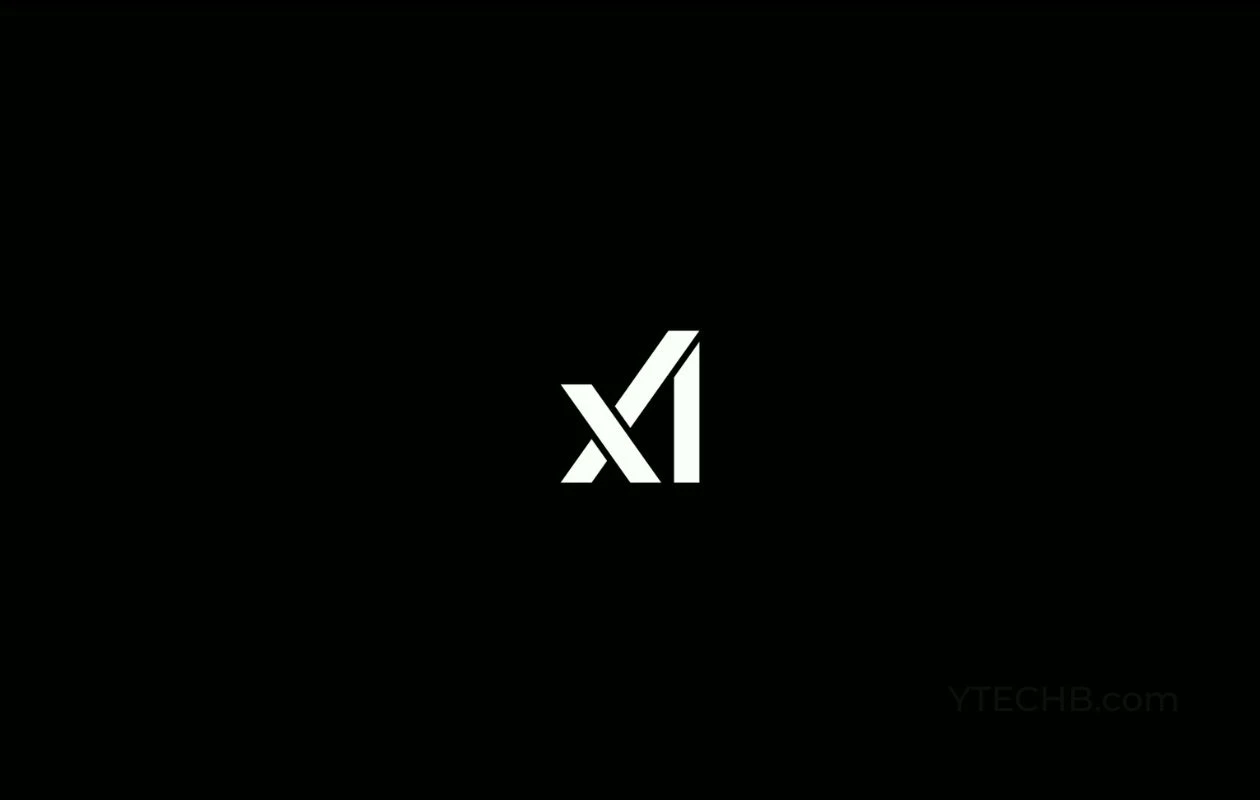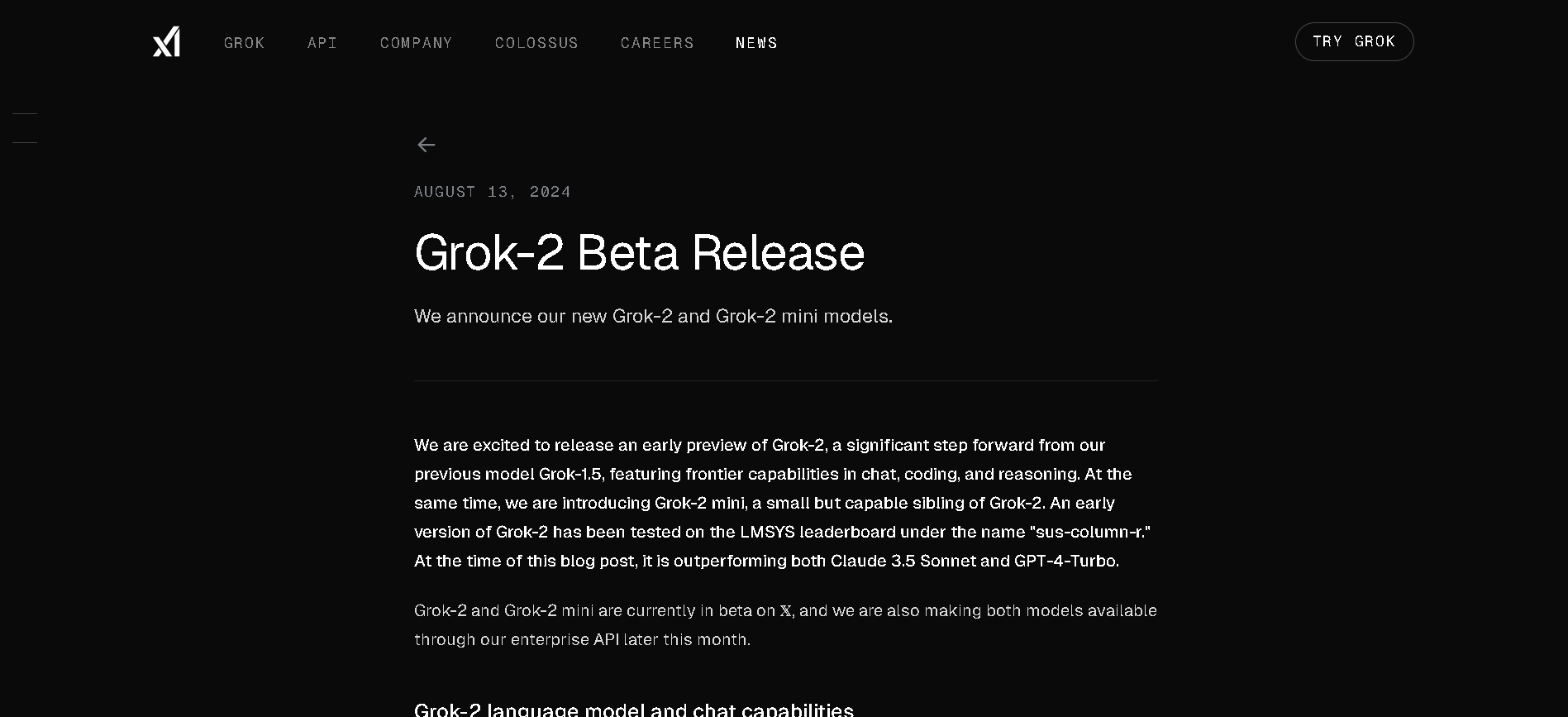
- Developers & Engineers: Integrate transparent reasoning in live apps or bots with minimal delay.
- Education & Tutoring: Provide real-time chain-of-thought outputs during live problem-solving.
- Enterprises: Deploy logic-driven AI in transactional workflows or chat interfaces requiring quick responses.
- Startups & Scaleups: Gain reasoning features without sacrificing interactivity or speed.
- Analysts & Researchers: Evaluate high-efficiency reasoning performance in low-latency settings.
How to Use Grok 3 Mini Fast?
- Access via xAI API / Oracle Cloud: Use the model ID `grok-3-mini-fast-beta`. Available in Oracle’s Generative AI and xAI’s API.
- Submit Prompts with Think: Include `"reasoning_effort": "high"` or tap “Think” in UI to get visible chain-of-thought reasoning.
- Send Multimodal Context: Use text and optional images within a 131K-token limit.
- Deploy with Speed: Leverage fast serving for up to
210 tokens/sec and0.32s initial latency. - Manage Cost: Input token cost ≈ $0.35/M; higher serving fees reflect output and speed.
- Fastest Reasoning Variant: Same transparent chain-of-thought as Mini, but served on ultra-low latency infrastructure.
- Visible Logic Traces: Delivers step-by-step reasoning trace with each response.
- Optimized Performance: Output speeds
209 tokens/sec,0.32s to first token—very responsive for reasoning pipelines. - Large Context Support: Handles up to 131,072 tokens—ideal for lengthy dialogue, documents, or code.
- Consistent Quality: Uses identical model weights as Grok 3 Mini, ensuring reasoning fidelity.
- Superior reasoning, math, and code benchmarks
- Vision support plus unrestricted image generation
- High chat performance in leaderboard style tests
- Tiered choices for speed vs. depth
- Robust API roll-out with security and analytics
- FLUX image generation lacks guardrails—could enable misuse.
- Beta rollout is currently limited to Premium tiers; general access pending.
- Ethical oversight needed due to unfiltered content outputs.
Free Tier
$ 0.00
Limited access to DeepSearch
Limited access to DeeperSearch
Super Grok
$30/month
More Aurora Images - 100 Images / 2h
Even Better Memory - 128K Context Window
Extended access to Thinking - 30 Queries / 2h
Extended access to DeepSearch - 30 Queries / 2h
Extended access to DeeperSearch - 10 Queries / 2h
API
$2/$10 per 1M tokens
Output - $10/M
Proud of the love you're getting? Show off your AI Toolbook reviews—then invite more fans to share the love and build your credibility.
Add an AI Toolbook badge to your site—an easy way to drive followers, showcase updates, and collect reviews. It's like a mini 24/7 billboard for your AI.
Reviews
Rating Distribution
Average score
Popular Mention
FAQs
Similar AI Tools
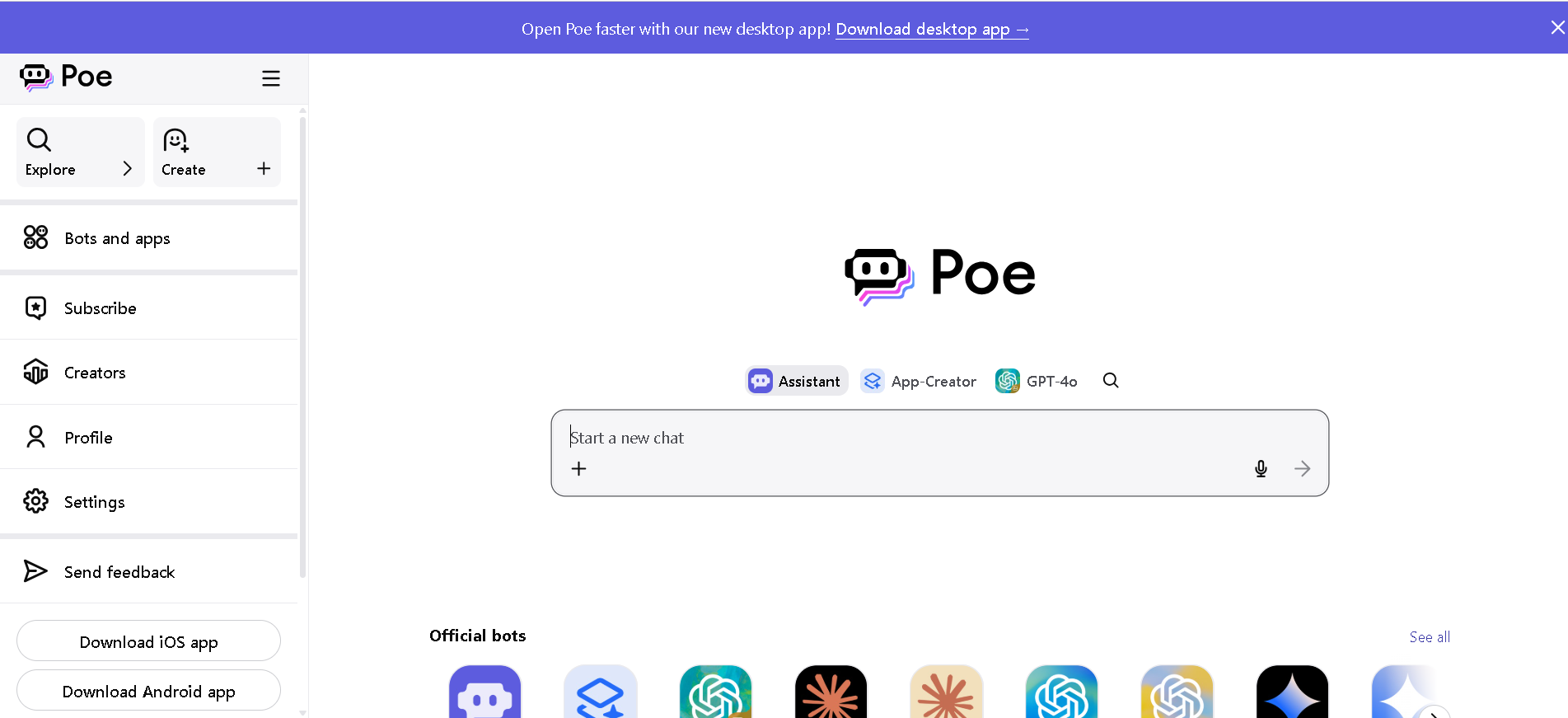
Poe AI
Poe.com is a comprehensive AI chatbot aggregation platform developed by Quora, providing users with unified access to a wide range of conversational AI models from various leading providers, including OpenAI, Anthropic, Google, and Meta. It simplifies the process of discovering and interacting with different AI chatbots and also empowers users to create and monetize their own custom AI bots.

Poe AI
Poe.com is a comprehensive AI chatbot aggregation platform developed by Quora, providing users with unified access to a wide range of conversational AI models from various leading providers, including OpenAI, Anthropic, Google, and Meta. It simplifies the process of discovering and interacting with different AI chatbots and also empowers users to create and monetize their own custom AI bots.

Poe AI
Poe.com is a comprehensive AI chatbot aggregation platform developed by Quora, providing users with unified access to a wide range of conversational AI models from various leading providers, including OpenAI, Anthropic, Google, and Meta. It simplifies the process of discovering and interacting with different AI chatbots and also empowers users to create and monetize their own custom AI bots.
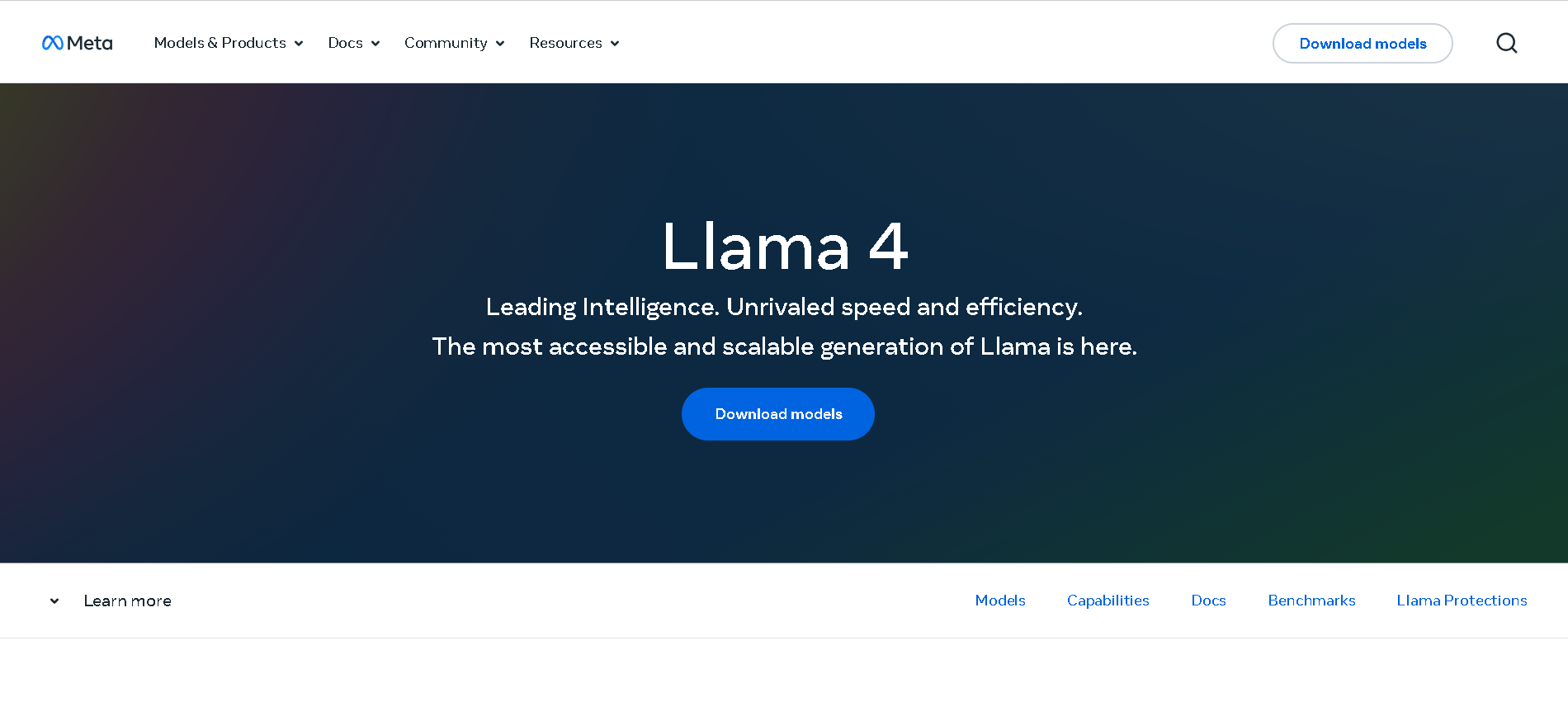
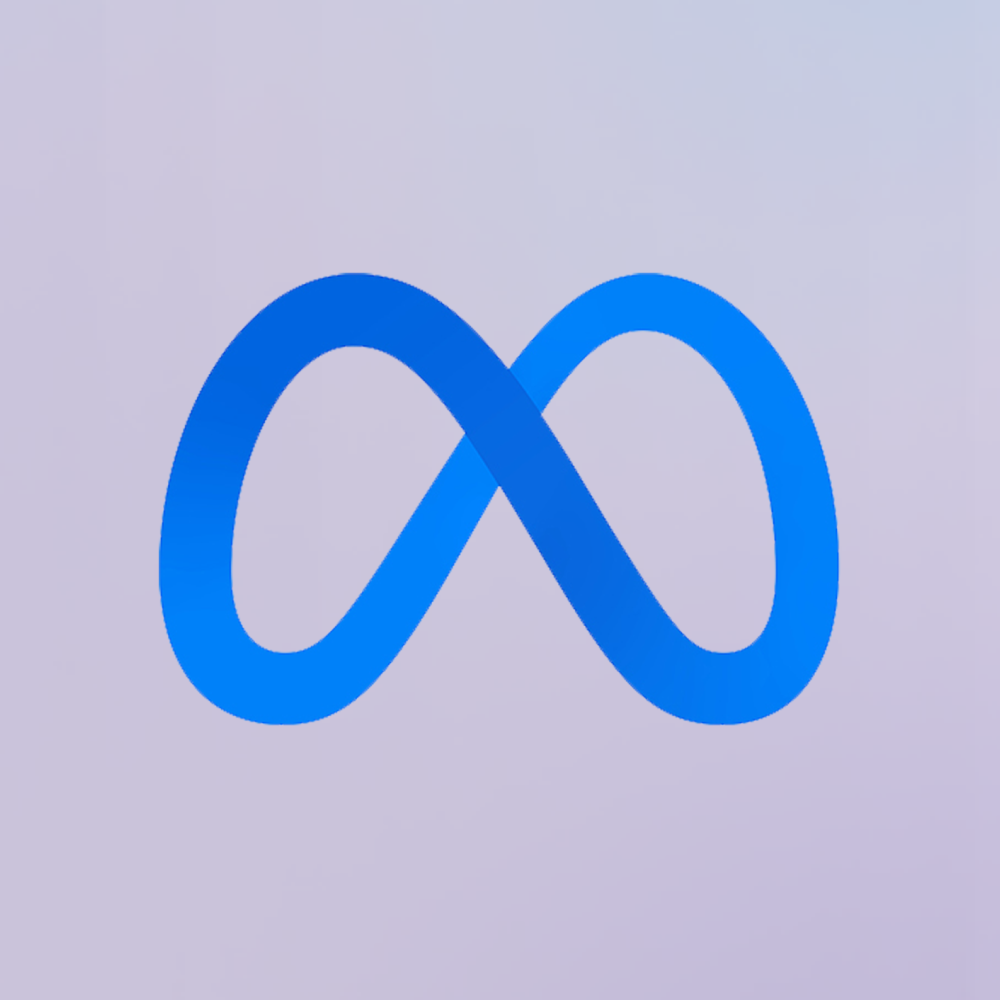
Meta Llama 4
Meta Llama 4 is the latest generation of Meta’s large language model series. It features a mixture-of-experts (MoE) architecture, making it both highly efficient and powerful. Llama 4 is natively multimodal—supporting text and image inputs—and offers three key variants: Scout (17B active parameters, 10 M token context), Maverick (17B active, 1 M token context), and Behemoth (288B active, 2 T total parameters; still in development). Designed for long-context reasoning, multilingual understanding, and open-weight availability (with license restrictions), Llama 4 excels in benchmarks and versatility.


Meta Llama 4
Meta Llama 4 is the latest generation of Meta’s large language model series. It features a mixture-of-experts (MoE) architecture, making it both highly efficient and powerful. Llama 4 is natively multimodal—supporting text and image inputs—and offers three key variants: Scout (17B active parameters, 10 M token context), Maverick (17B active, 1 M token context), and Behemoth (288B active, 2 T total parameters; still in development). Designed for long-context reasoning, multilingual understanding, and open-weight availability (with license restrictions), Llama 4 excels in benchmarks and versatility.


Meta Llama 4
Meta Llama 4 is the latest generation of Meta’s large language model series. It features a mixture-of-experts (MoE) architecture, making it both highly efficient and powerful. Llama 4 is natively multimodal—supporting text and image inputs—and offers three key variants: Scout (17B active parameters, 10 M token context), Maverick (17B active, 1 M token context), and Behemoth (288B active, 2 T total parameters; still in development). Designed for long-context reasoning, multilingual understanding, and open-weight availability (with license restrictions), Llama 4 excels in benchmarks and versatility.

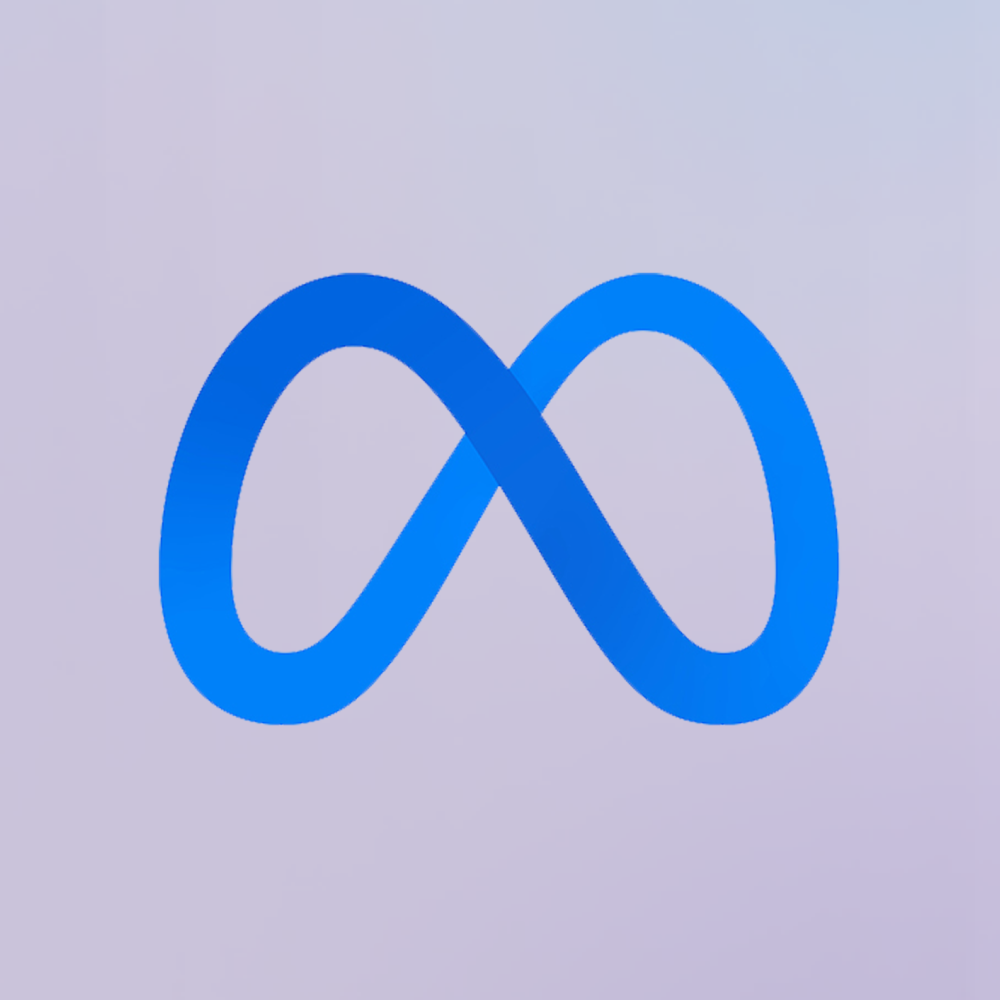
Meta Llama 3
Meta Llama 3 is Meta’s third-generation open-weight large language model family, released in April 2024 and enhanced in July 2024 with the 3.1 update. It spans three sizes—8B, 70B, and 405B parameters—each offering a 128K‑token context window. Llama 3 excels at reasoning, code generation, multilingual text, and instruction-following, and introduces multimodal vision (image understanding) capabilities in its 3.2 series. Robust safety mechanisms like Llama Guard 3, Code Shield, and CyberSec Eval 2 ensure responsible output.


Meta Llama 3
Meta Llama 3 is Meta’s third-generation open-weight large language model family, released in April 2024 and enhanced in July 2024 with the 3.1 update. It spans three sizes—8B, 70B, and 405B parameters—each offering a 128K‑token context window. Llama 3 excels at reasoning, code generation, multilingual text, and instruction-following, and introduces multimodal vision (image understanding) capabilities in its 3.2 series. Robust safety mechanisms like Llama Guard 3, Code Shield, and CyberSec Eval 2 ensure responsible output.


Meta Llama 3
Meta Llama 3 is Meta’s third-generation open-weight large language model family, released in April 2024 and enhanced in July 2024 with the 3.1 update. It spans three sizes—8B, 70B, and 405B parameters—each offering a 128K‑token context window. Llama 3 excels at reasoning, code generation, multilingual text, and instruction-following, and introduces multimodal vision (image understanding) capabilities in its 3.2 series. Robust safety mechanisms like Llama Guard 3, Code Shield, and CyberSec Eval 2 ensure responsible output.

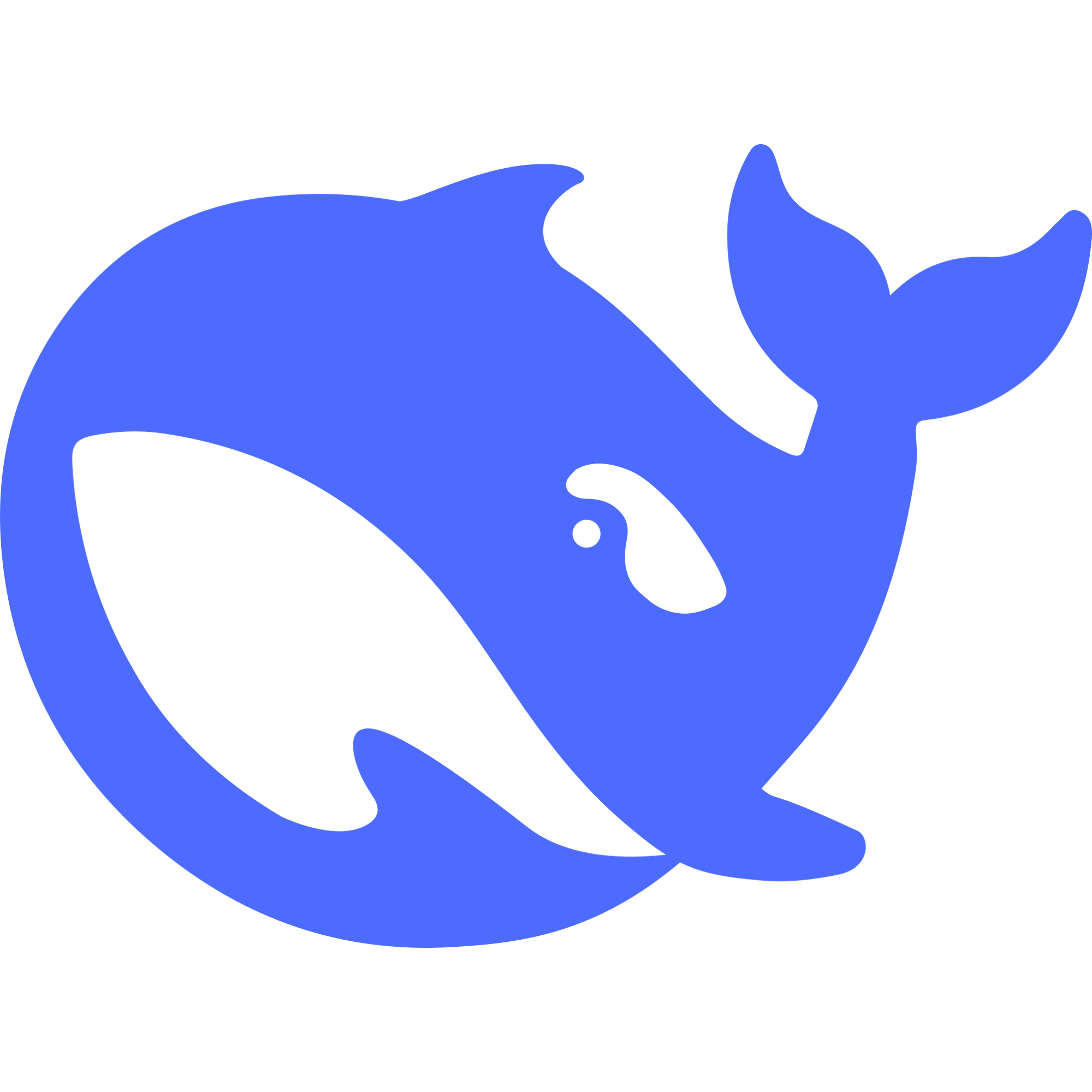
DeepSeek-V2
DeepSeek V2 is an open-source, Mixture‑of‑Experts (MoE) language model developed by DeepSeek-AI, released in May 2024. It features a massive 236 B total parameters with approximately 21 B activated per token, supports up to 128 K token context, and adopts innovative MLA (Multi‑head Latent Attention) and sparse expert routing. DeepSeek V2 delivers top-tier performance on benchmarks while cutting training and inference costs significantly.


DeepSeek-V2
DeepSeek V2 is an open-source, Mixture‑of‑Experts (MoE) language model developed by DeepSeek-AI, released in May 2024. It features a massive 236 B total parameters with approximately 21 B activated per token, supports up to 128 K token context, and adopts innovative MLA (Multi‑head Latent Attention) and sparse expert routing. DeepSeek V2 delivers top-tier performance on benchmarks while cutting training and inference costs significantly.


DeepSeek-V2
DeepSeek V2 is an open-source, Mixture‑of‑Experts (MoE) language model developed by DeepSeek-AI, released in May 2024. It features a massive 236 B total parameters with approximately 21 B activated per token, supports up to 128 K token context, and adopts innovative MLA (Multi‑head Latent Attention) and sparse expert routing. DeepSeek V2 delivers top-tier performance on benchmarks while cutting training and inference costs significantly.
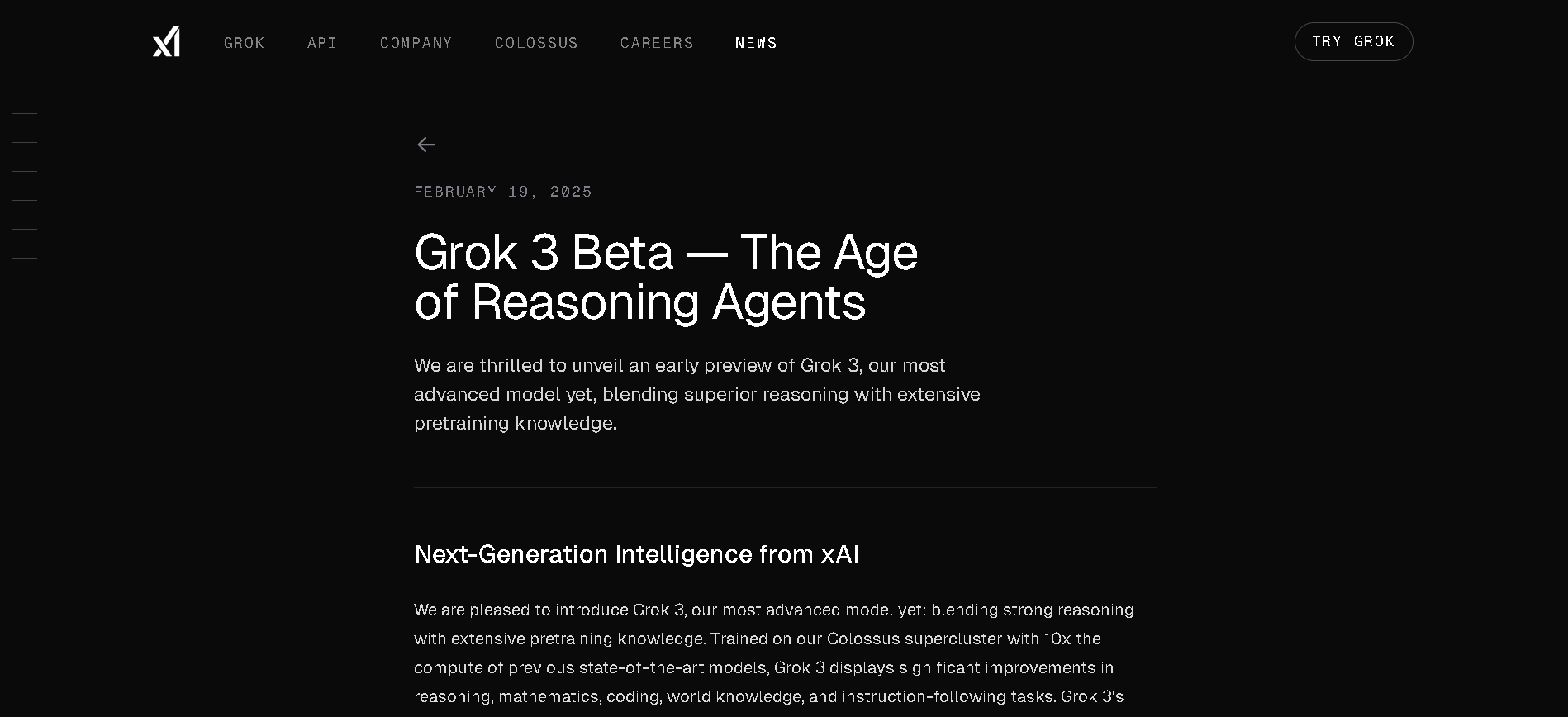

grok-3-fast
Grok 3 Fast is xAI’s low-latency variant of their flagship Grok 3 model. It delivers identical output quality but responds faster by leveraging optimized serving infrastructure—ideal for real-time, speed-sensitive applications. It inherits the same multimodal, reasoning, and chain-of-thought capabilities as Grok 3, with a large context window of ~131K tokens.


grok-3-fast
Grok 3 Fast is xAI’s low-latency variant of their flagship Grok 3 model. It delivers identical output quality but responds faster by leveraging optimized serving infrastructure—ideal for real-time, speed-sensitive applications. It inherits the same multimodal, reasoning, and chain-of-thought capabilities as Grok 3, with a large context window of ~131K tokens.


grok-3-fast
Grok 3 Fast is xAI’s low-latency variant of their flagship Grok 3 model. It delivers identical output quality but responds faster by leveraging optimized serving infrastructure—ideal for real-time, speed-sensitive applications. It inherits the same multimodal, reasoning, and chain-of-thought capabilities as Grok 3, with a large context window of ~131K tokens.
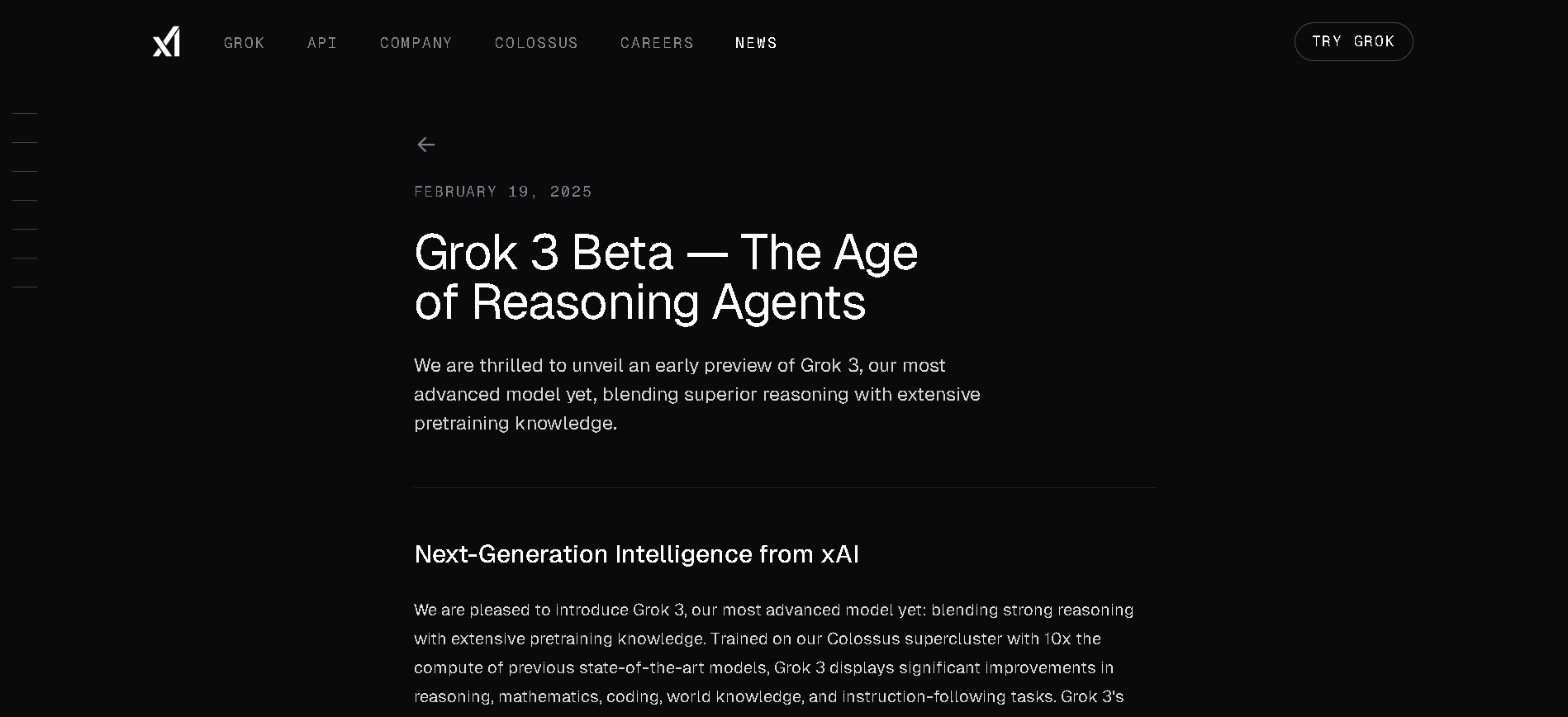
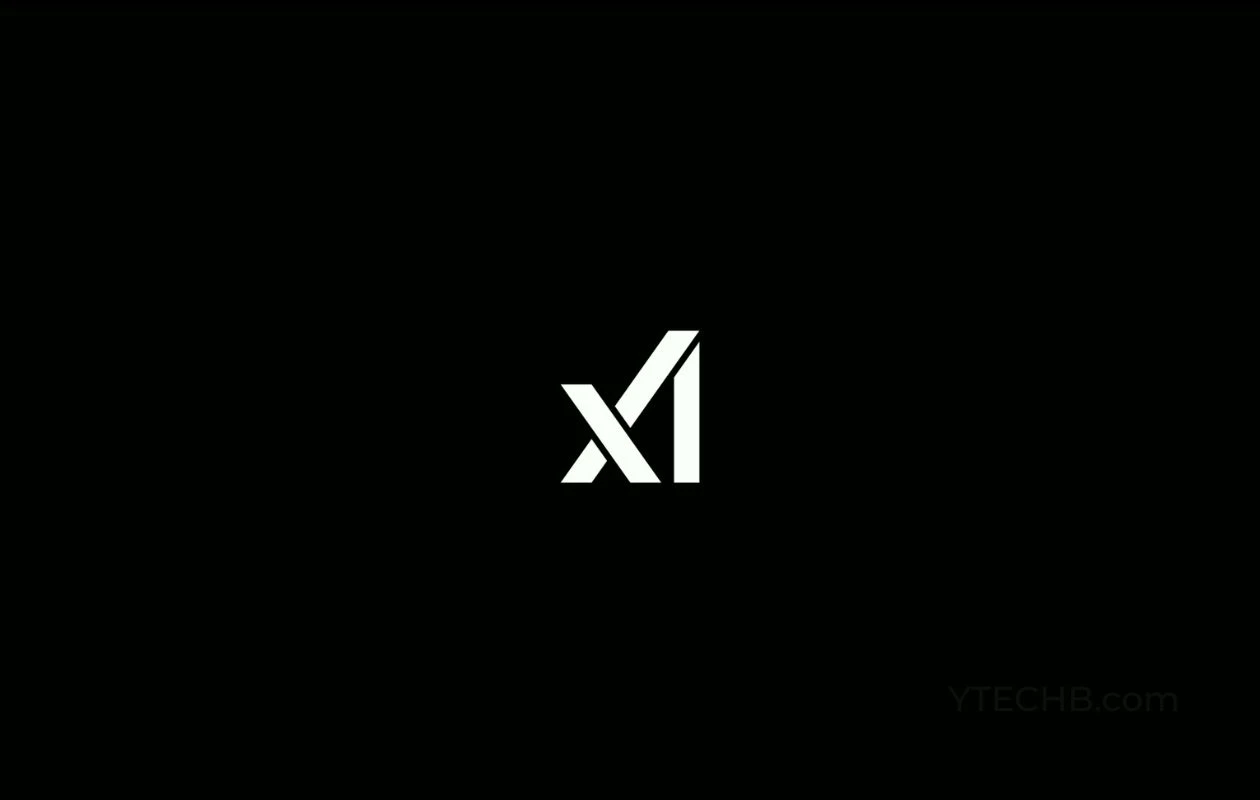
Grok 3 Mini
Grok 3 Mini is xAI’s compact, cost-efficient reasoning variant of the flagship Grok 3 model. Released alongside Grok 3 in February 2025, it offers many of the same advanced reasoning capabilities—like chain-of-thought “Think” mode and multimodal support—with lower compute and faster responses. It's ideal for logic-heavy tasks that don't require the depth of the full version.


Grok 3 Mini
Grok 3 Mini is xAI’s compact, cost-efficient reasoning variant of the flagship Grok 3 model. Released alongside Grok 3 in February 2025, it offers many of the same advanced reasoning capabilities—like chain-of-thought “Think” mode and multimodal support—with lower compute and faster responses. It's ideal for logic-heavy tasks that don't require the depth of the full version.


Grok 3 Mini
Grok 3 Mini is xAI’s compact, cost-efficient reasoning variant of the flagship Grok 3 model. Released alongside Grok 3 in February 2025, it offers many of the same advanced reasoning capabilities—like chain-of-thought “Think” mode and multimodal support—with lower compute and faster responses. It's ideal for logic-heavy tasks that don't require the depth of the full version.

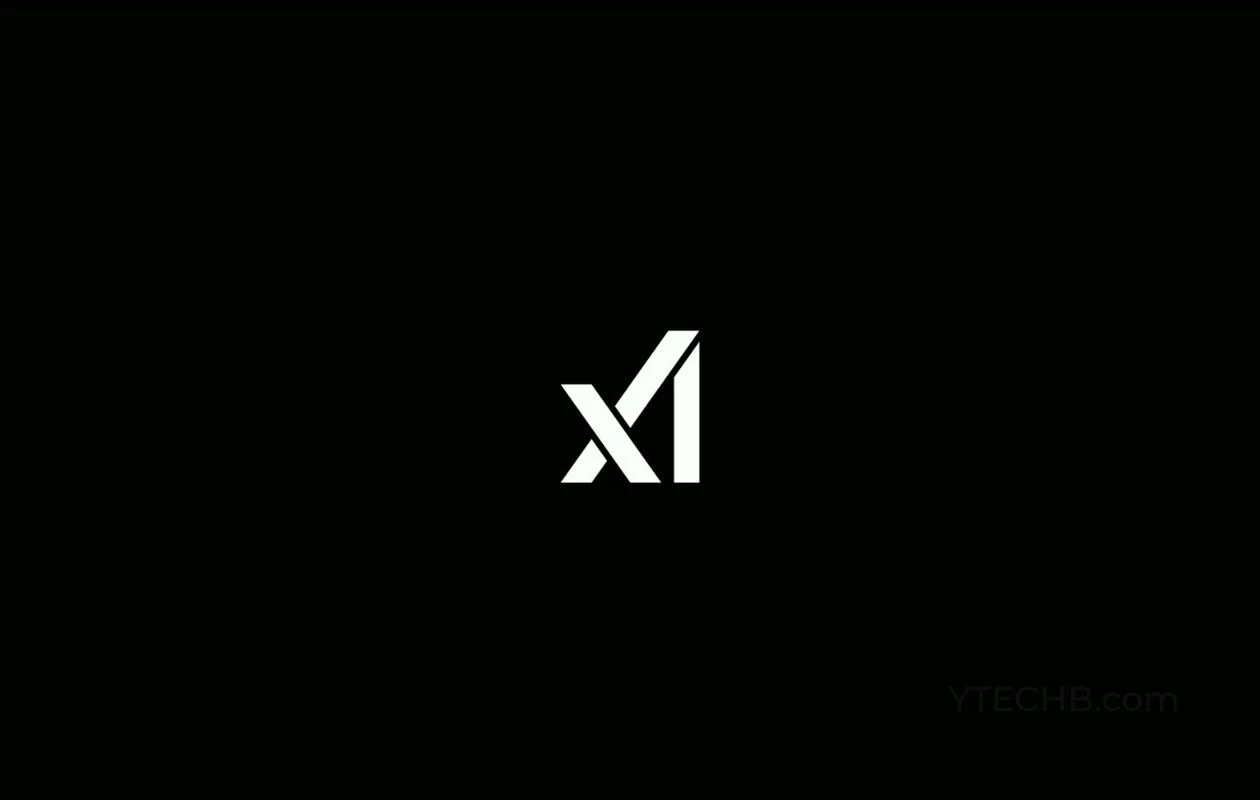
grok-3-mini-latest
Grok 3 Mini is xAI’s compact, reasoning-focused variant of the Grok 3 series. Released in February 2025 alongside the flagship model, it's optimized for cost-effective, transparent chain-of-thought reasoning via "Think" mode, with full multimodal input and access to xAI’s Colossus-trained capabilities. The latest version supports live preview on Azure AI Foundry and GitHub Models—combining speed, affordability, and logic traversal in real-time workflows.


grok-3-mini-latest
Grok 3 Mini is xAI’s compact, reasoning-focused variant of the Grok 3 series. Released in February 2025 alongside the flagship model, it's optimized for cost-effective, transparent chain-of-thought reasoning via "Think" mode, with full multimodal input and access to xAI’s Colossus-trained capabilities. The latest version supports live preview on Azure AI Foundry and GitHub Models—combining speed, affordability, and logic traversal in real-time workflows.


grok-3-mini-latest
Grok 3 Mini is xAI’s compact, reasoning-focused variant of the Grok 3 series. Released in February 2025 alongside the flagship model, it's optimized for cost-effective, transparent chain-of-thought reasoning via "Think" mode, with full multimodal input and access to xAI’s Colossus-trained capabilities. The latest version supports live preview on Azure AI Foundry and GitHub Models—combining speed, affordability, and logic traversal in real-time workflows.
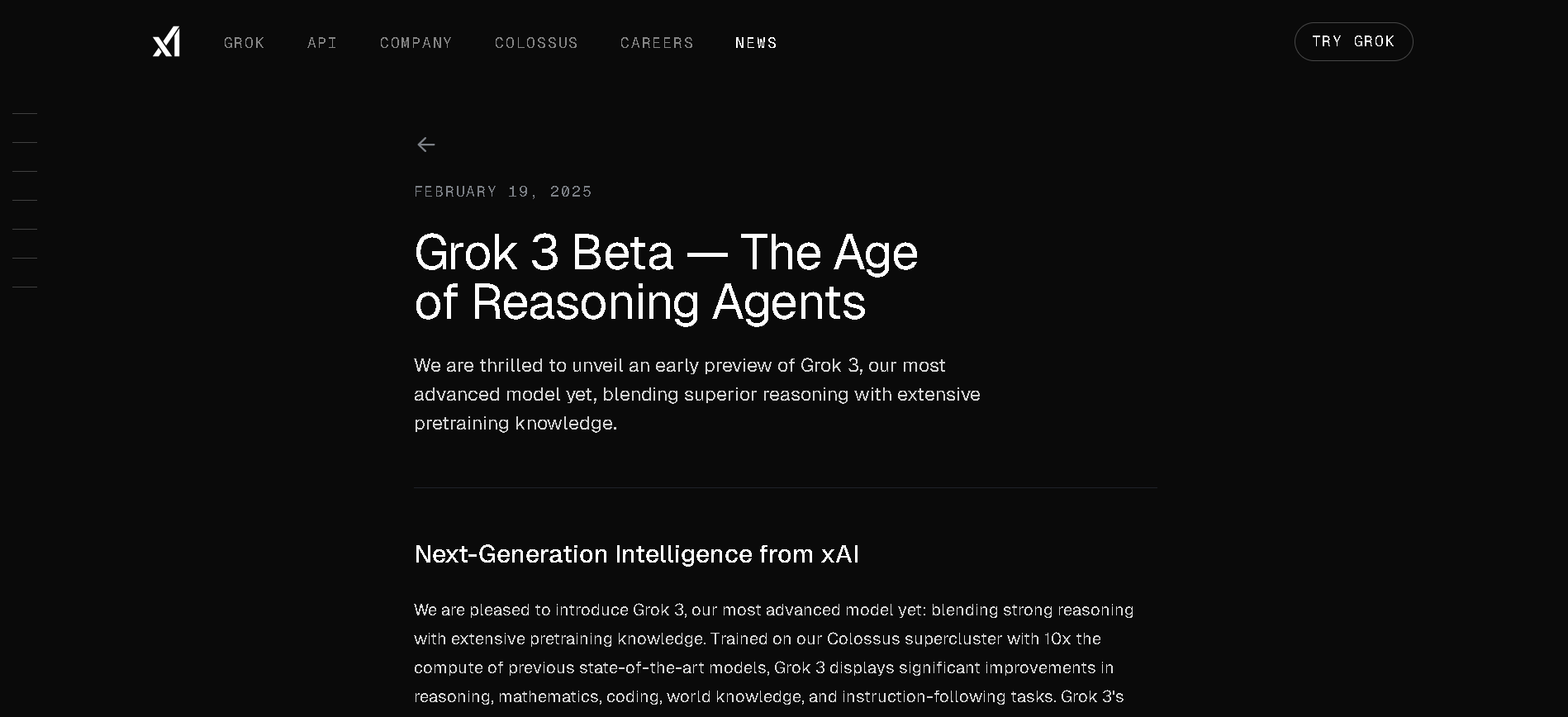
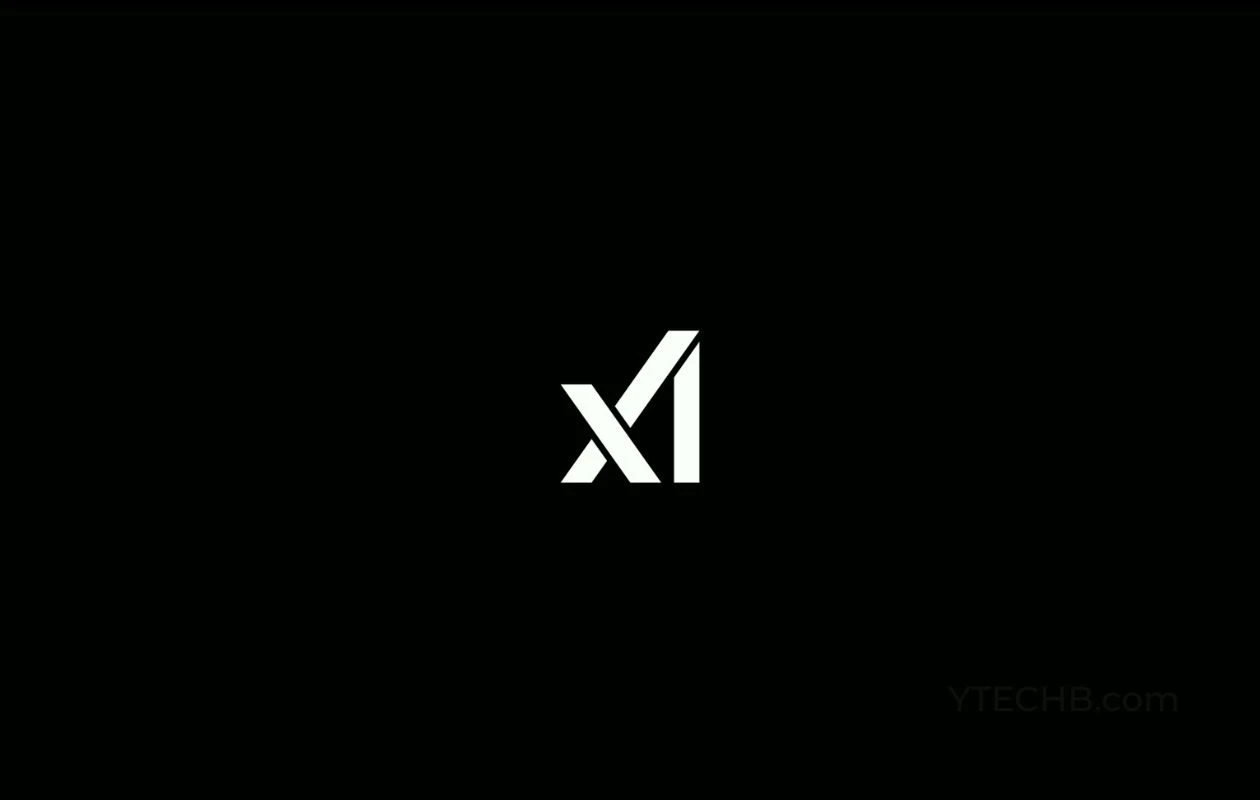
grok-3-mini-fast
Grok 3 Mini Fast is the low-latency, high-performance version of xAI’s Grok 3 Mini model. Released in beta around May 2025, it offers the same visible chain-of-thought reasoning as Grok 3 Mini but delivers responses significantly faster, powered by optimized infrastructure. It supports up to 131,072 tokens of context.


grok-3-mini-fast
Grok 3 Mini Fast is the low-latency, high-performance version of xAI’s Grok 3 Mini model. Released in beta around May 2025, it offers the same visible chain-of-thought reasoning as Grok 3 Mini but delivers responses significantly faster, powered by optimized infrastructure. It supports up to 131,072 tokens of context.


grok-3-mini-fast
Grok 3 Mini Fast is the low-latency, high-performance version of xAI’s Grok 3 Mini model. Released in beta around May 2025, it offers the same visible chain-of-thought reasoning as Grok 3 Mini but delivers responses significantly faster, powered by optimized infrastructure. It supports up to 131,072 tokens of context.
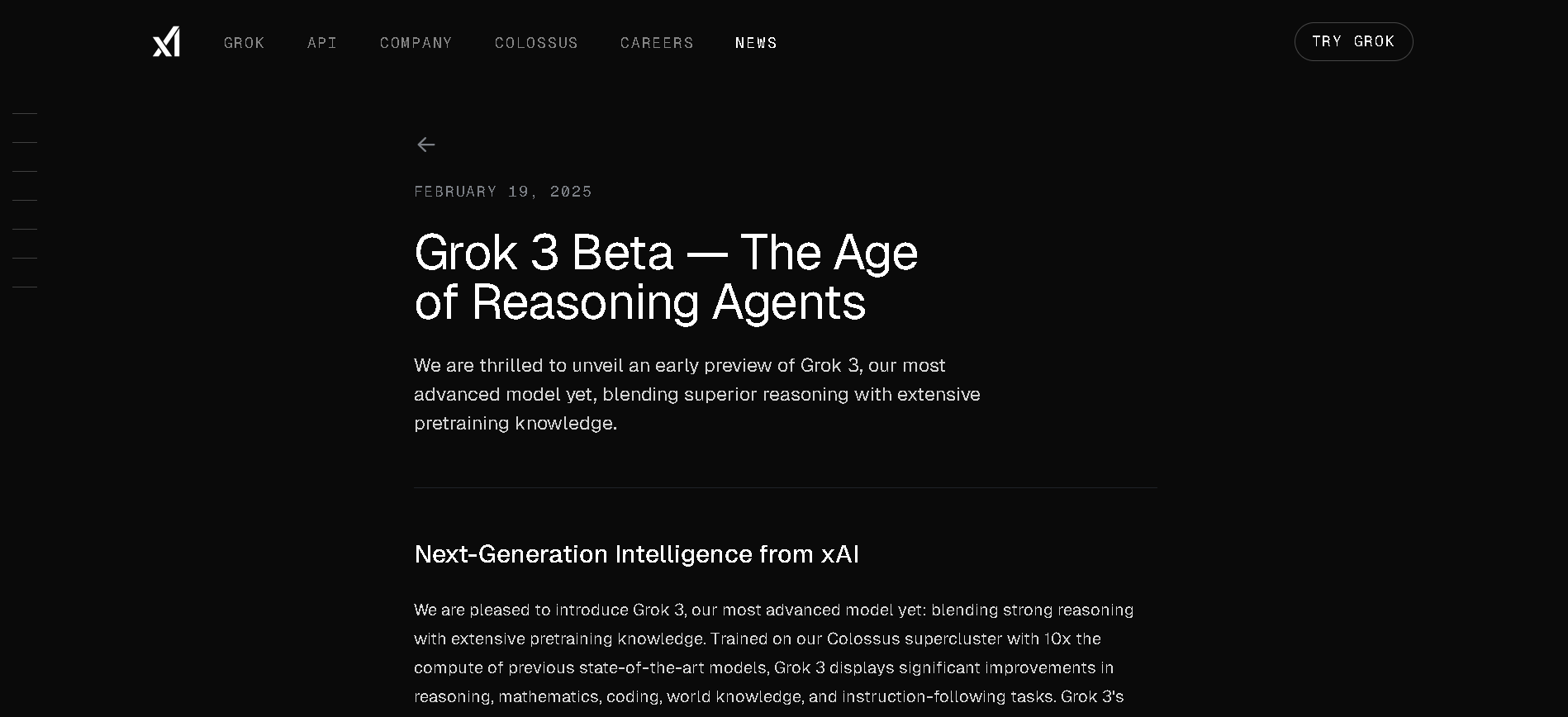
Grok 3 Mini Fast is xAI’s most recent, low-latency variant of the compact Grok 3 Mini model. It maintains full chain-of-thought “Think” reasoning and multimodal support while delivering faster response times. The model handles up to 131,072 tokens of context and is now widely accessible in beta via xAI API and select cloud platforms.

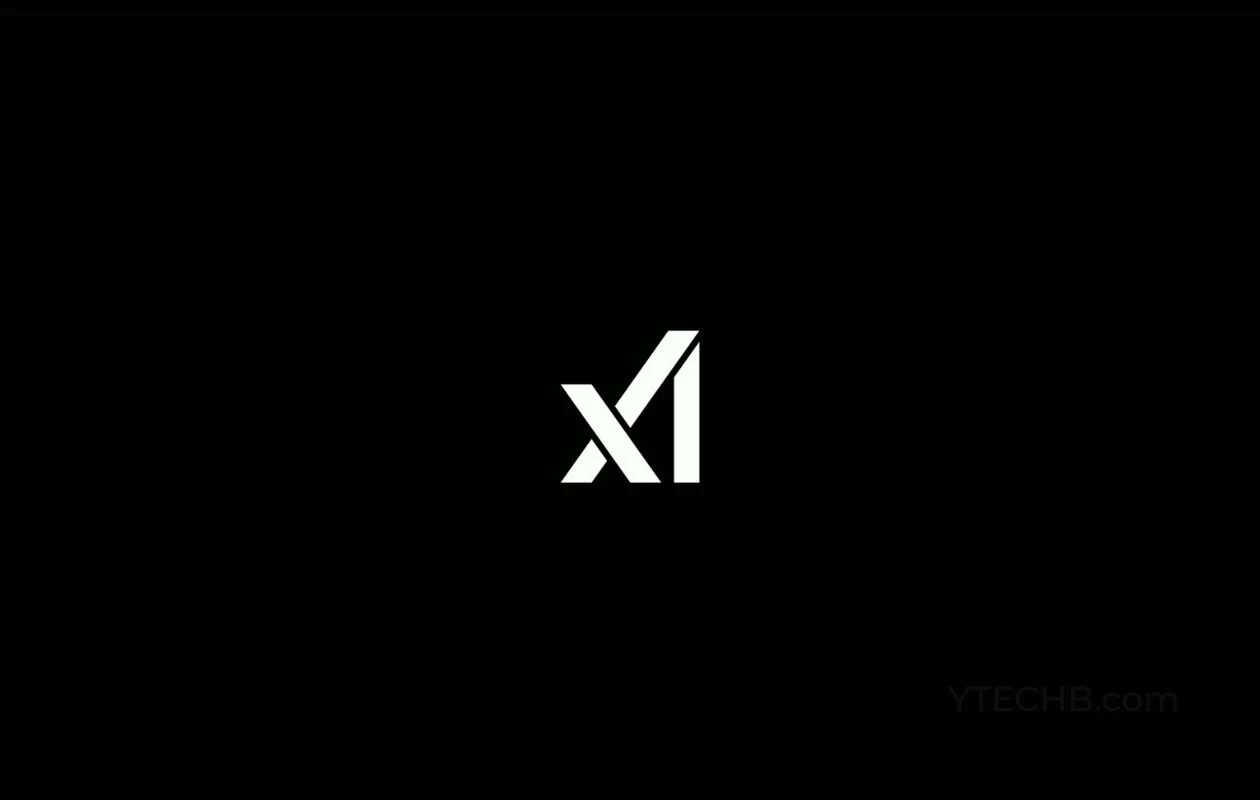
grok-3-mini-fast-l..
Grok 3 Mini Fast is xAI’s most recent, low-latency variant of the compact Grok 3 Mini model. It maintains full chain-of-thought “Think” reasoning and multimodal support while delivering faster response times. The model handles up to 131,072 tokens of context and is now widely accessible in beta via xAI API and select cloud platforms.


grok-3-mini-fast-l..
Grok 3 Mini Fast is xAI’s most recent, low-latency variant of the compact Grok 3 Mini model. It maintains full chain-of-thought “Think” reasoning and multimodal support while delivering faster response times. The model handles up to 131,072 tokens of context and is now widely accessible in beta via xAI API and select cloud platforms.
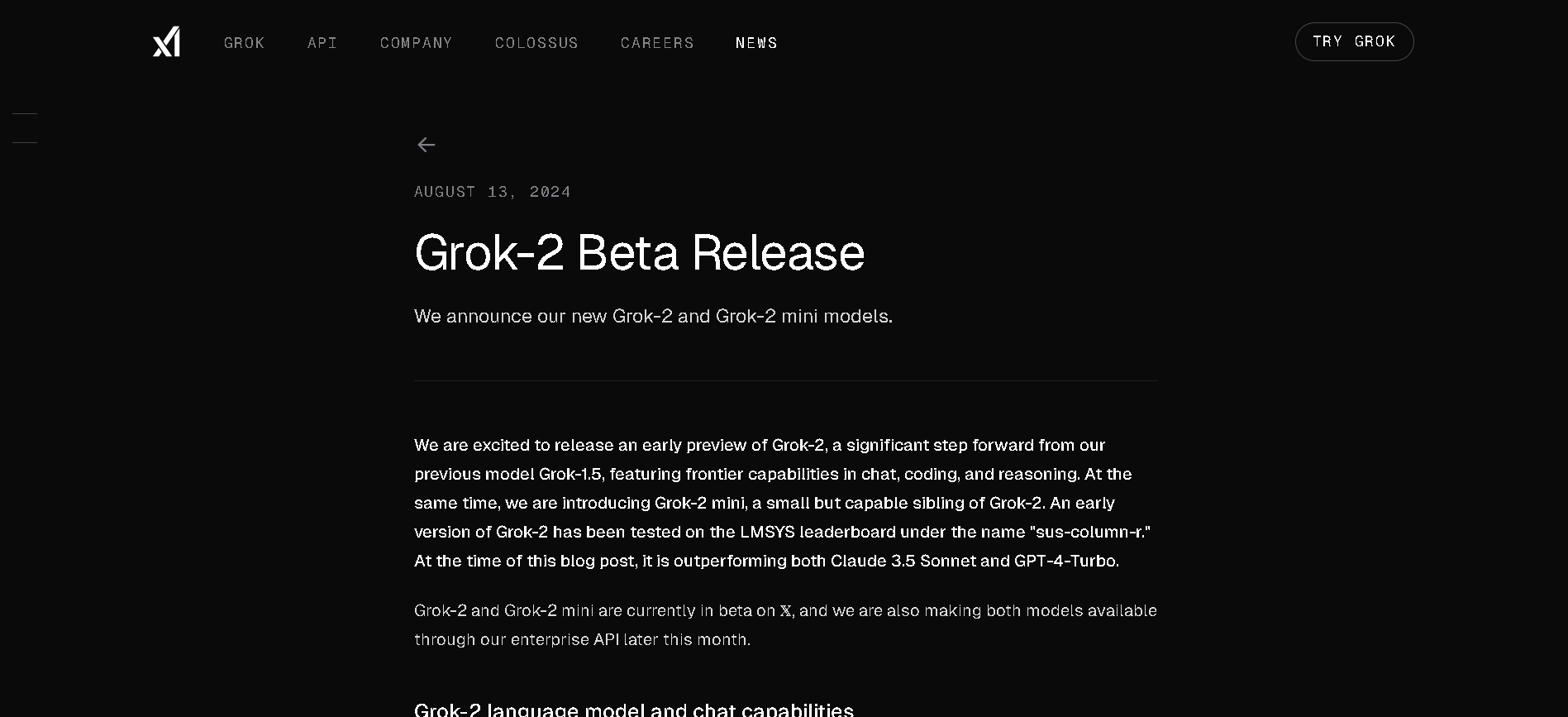
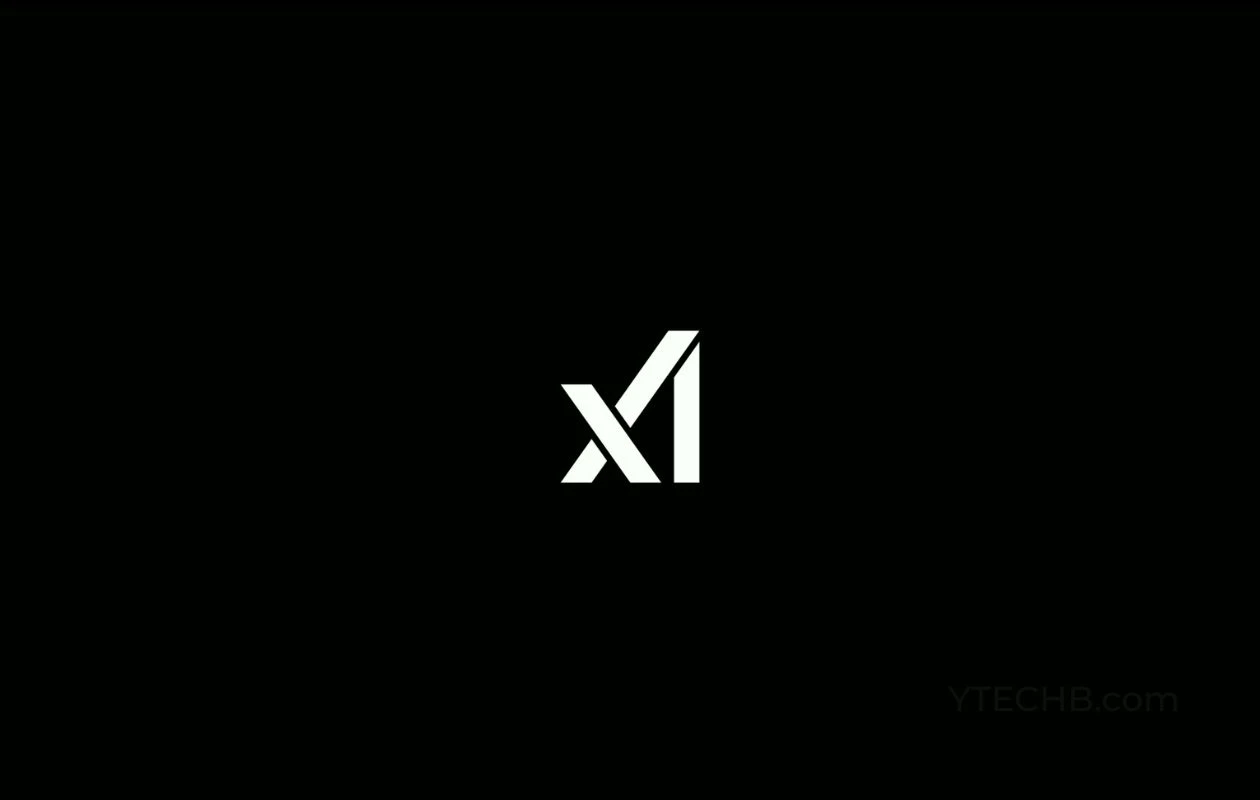
grok-2-vision
Grok 2 Vision (also known as Grok‑2‑Vision‑1212 or grok‑2‑vision‑latest) is xAI’s multimodal variant of Grok 2, designed specifically for advanced image understanding and generation. Launched in December 2024, it supports joint text+image inputs up to 32,768 tokens, excelling in visual math reasoning (MathVista), document question answering (DocVQA), object recognition, and style analysis—while also offering photorealistic image creation via the FLUX.1 model.


grok-2-vision
Grok 2 Vision (also known as Grok‑2‑Vision‑1212 or grok‑2‑vision‑latest) is xAI’s multimodal variant of Grok 2, designed specifically for advanced image understanding and generation. Launched in December 2024, it supports joint text+image inputs up to 32,768 tokens, excelling in visual math reasoning (MathVista), document question answering (DocVQA), object recognition, and style analysis—while also offering photorealistic image creation via the FLUX.1 model.


grok-2-vision
Grok 2 Vision (also known as Grok‑2‑Vision‑1212 or grok‑2‑vision‑latest) is xAI’s multimodal variant of Grok 2, designed specifically for advanced image understanding and generation. Launched in December 2024, it supports joint text+image inputs up to 32,768 tokens, excelling in visual math reasoning (MathVista), document question answering (DocVQA), object recognition, and style analysis—while also offering photorealistic image creation via the FLUX.1 model.
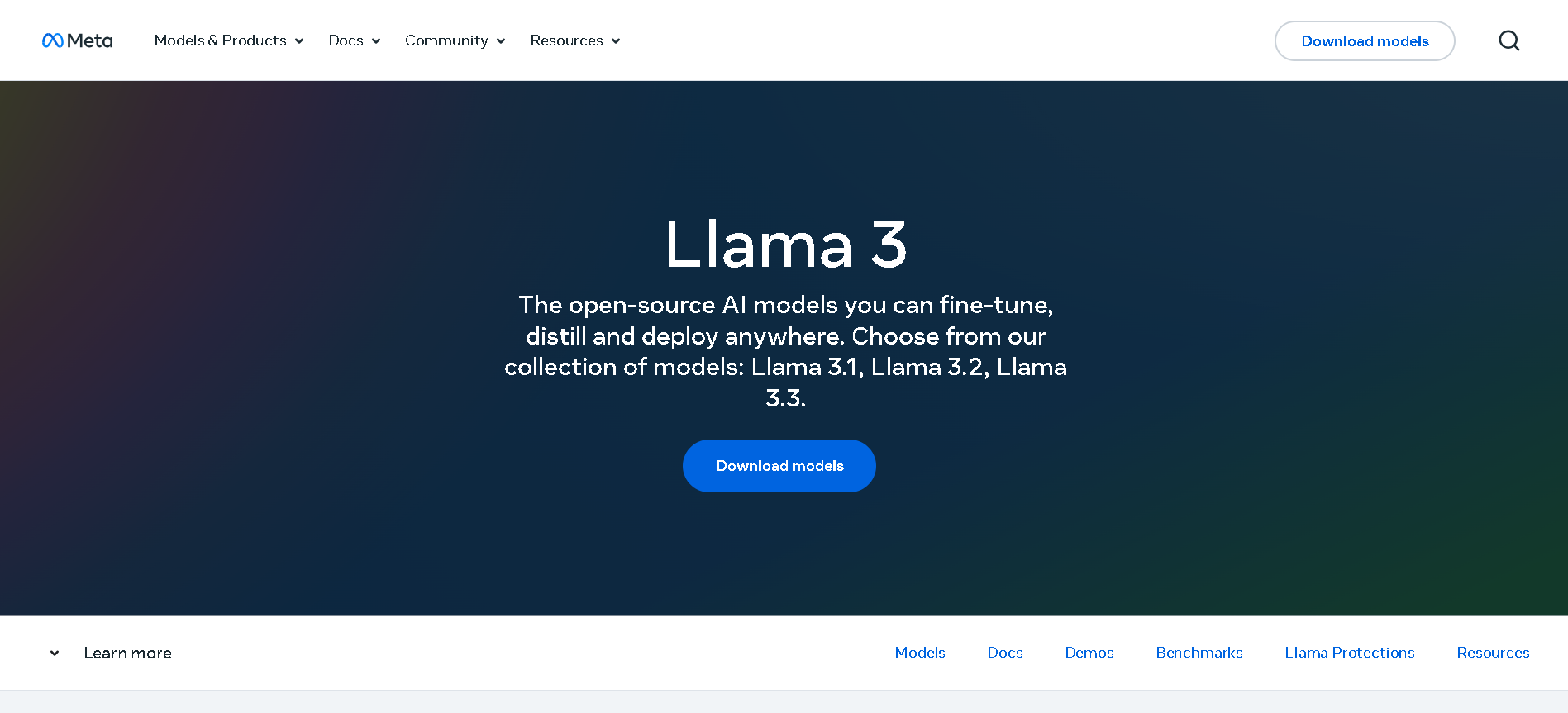
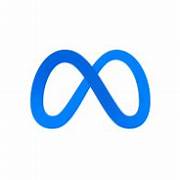
Meta Llama 3.2
Llama 3.2 is Meta’s multimodal and lightweight update to its Llama 3 line, released on September 25, 2024. The family includes 1B and 3B text-only models optimized for edge devices, as well as 11B and 90B Vision models capable of image understanding. It offers a 128K-token context window, Grouped-Query Attention for efficient inference, and opens up on-device, private AI with strong multilingual (e.g. Hindi, Spanish) support.


Meta Llama 3.2
Llama 3.2 is Meta’s multimodal and lightweight update to its Llama 3 line, released on September 25, 2024. The family includes 1B and 3B text-only models optimized for edge devices, as well as 11B and 90B Vision models capable of image understanding. It offers a 128K-token context window, Grouped-Query Attention for efficient inference, and opens up on-device, private AI with strong multilingual (e.g. Hindi, Spanish) support.


Meta Llama 3.2
Llama 3.2 is Meta’s multimodal and lightweight update to its Llama 3 line, released on September 25, 2024. The family includes 1B and 3B text-only models optimized for edge devices, as well as 11B and 90B Vision models capable of image understanding. It offers a 128K-token context window, Grouped-Query Attention for efficient inference, and opens up on-device, private AI with strong multilingual (e.g. Hindi, Spanish) support.
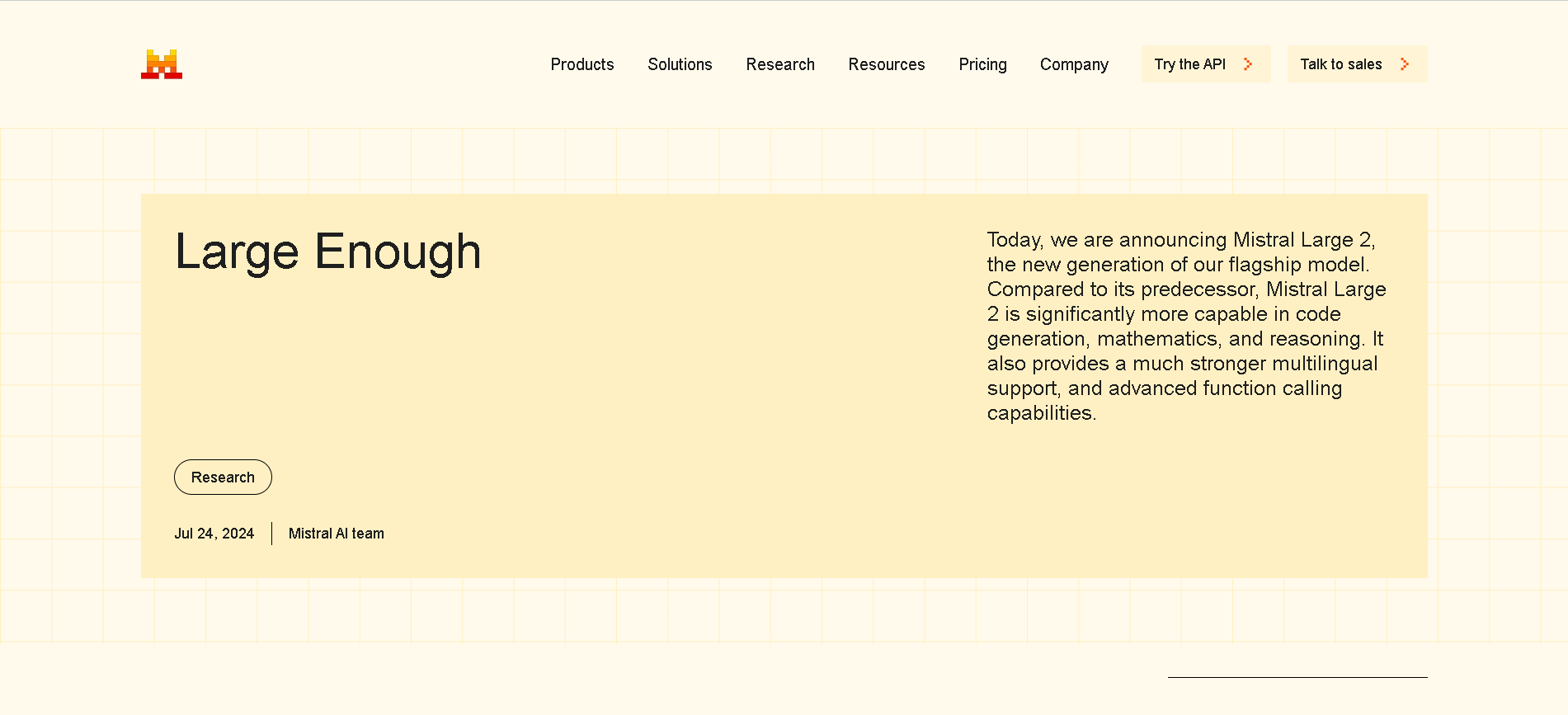
Mistral Large 2
Mistral Large 2 is the second-generation flagship model from Mistral AI, released in July 2024. Also referenced as mistral-large-2407, it’s a 123 B-parameter dense LLM with a 128 K-token context window, supporting dozens of languages and 80+ coding languages. It excels in reasoning, code generation, mathematics, instruction-following, and function calling—designed for high throughput on single-node setups.

Mistral Large 2
Mistral Large 2 is the second-generation flagship model from Mistral AI, released in July 2024. Also referenced as mistral-large-2407, it’s a 123 B-parameter dense LLM with a 128 K-token context window, supporting dozens of languages and 80+ coding languages. It excels in reasoning, code generation, mathematics, instruction-following, and function calling—designed for high throughput on single-node setups.

Mistral Large 2
Mistral Large 2 is the second-generation flagship model from Mistral AI, released in July 2024. Also referenced as mistral-large-2407, it’s a 123 B-parameter dense LLM with a 128 K-token context window, supporting dozens of languages and 80+ coding languages. It excels in reasoning, code generation, mathematics, instruction-following, and function calling—designed for high throughput on single-node setups.
Editorial Note
This page was researched and written by the ATB Editorial Team. Our team researches each AI tool by reviewing its official website, testing features, exploring real use cases, and considering user feedback. Every page is fact-checked and regularly updated to ensure the information stays accurate, neutral, and useful for our readers.
If you have any suggestions or questions, email us at hello@aitoolbook.ai
